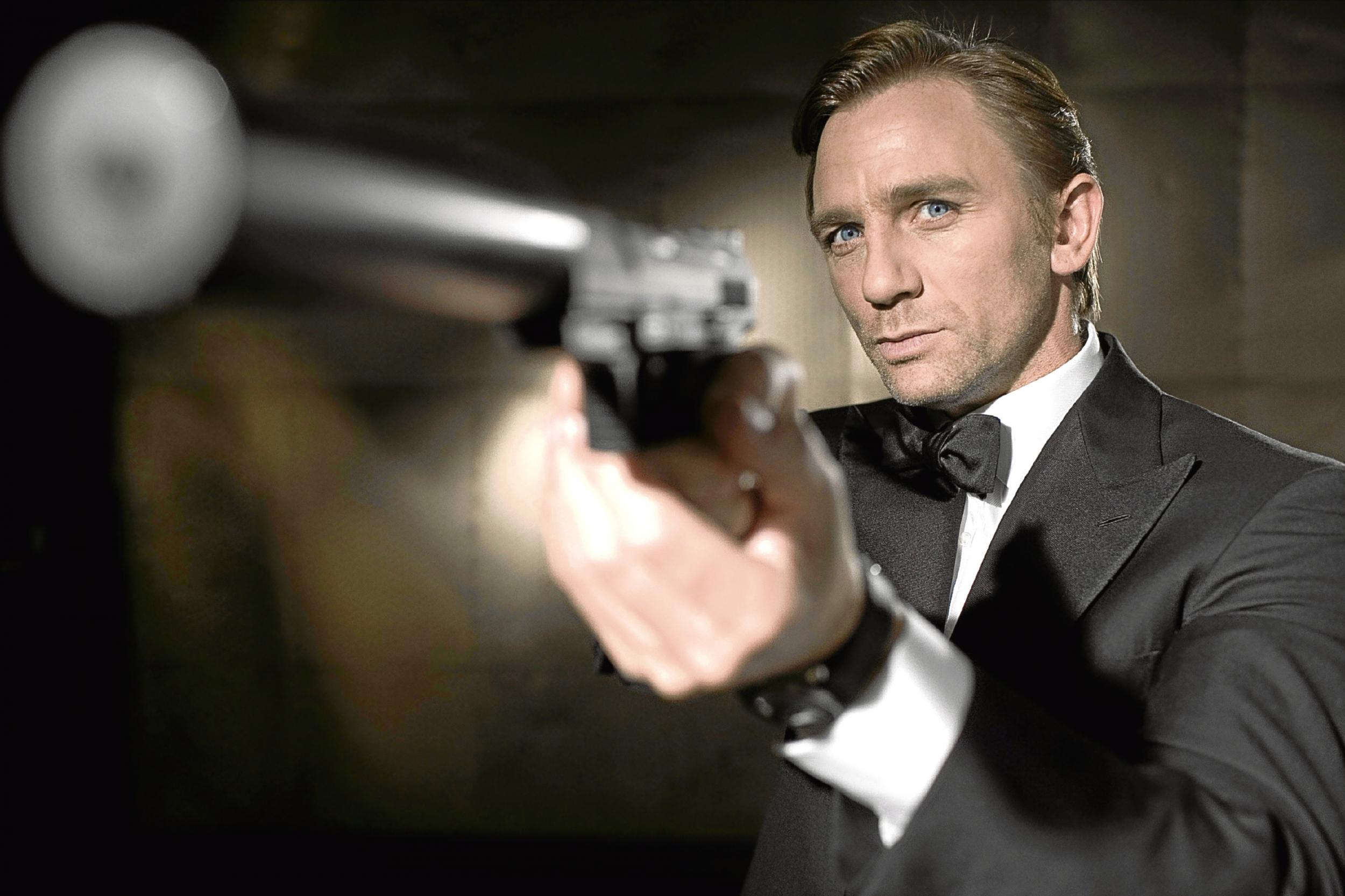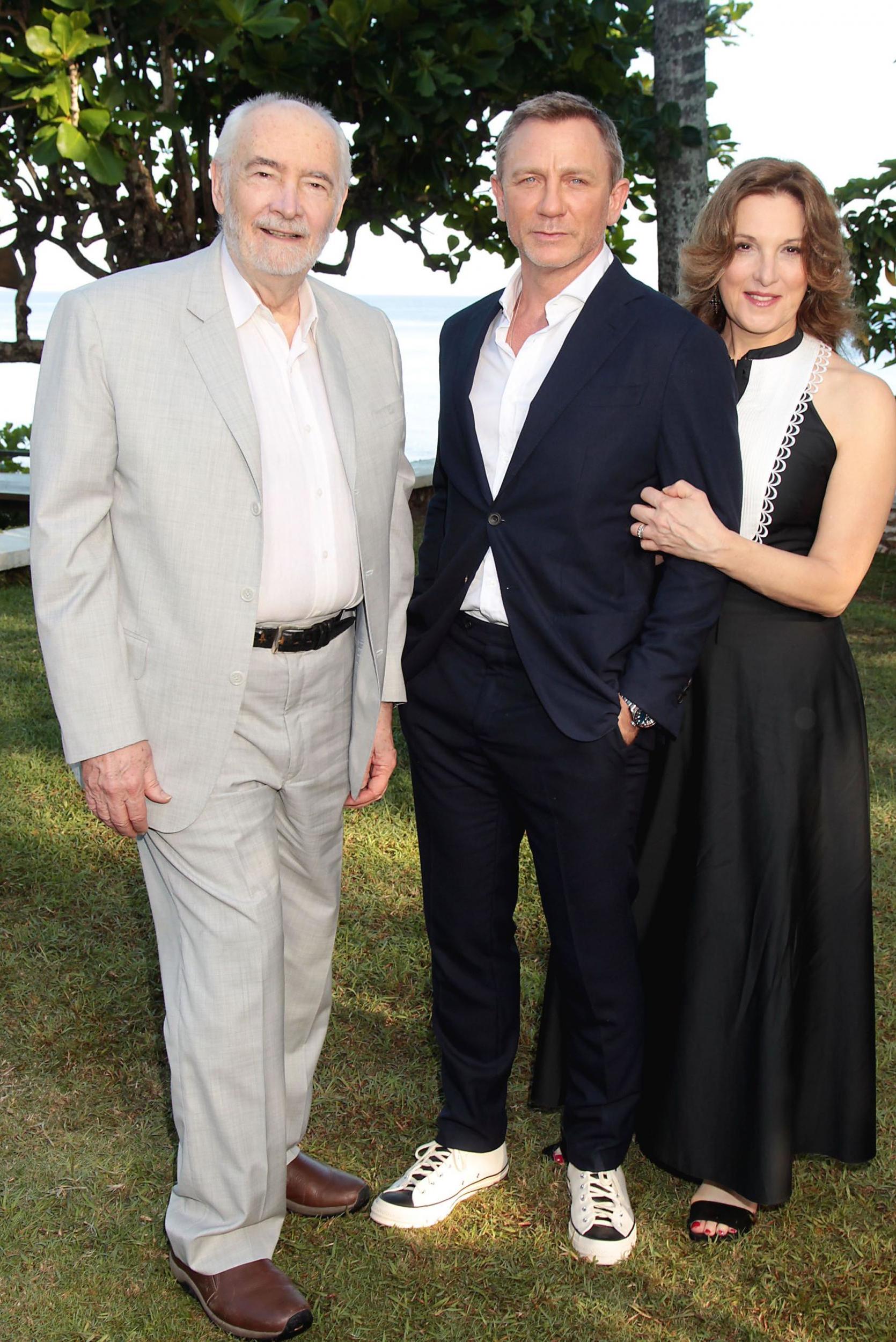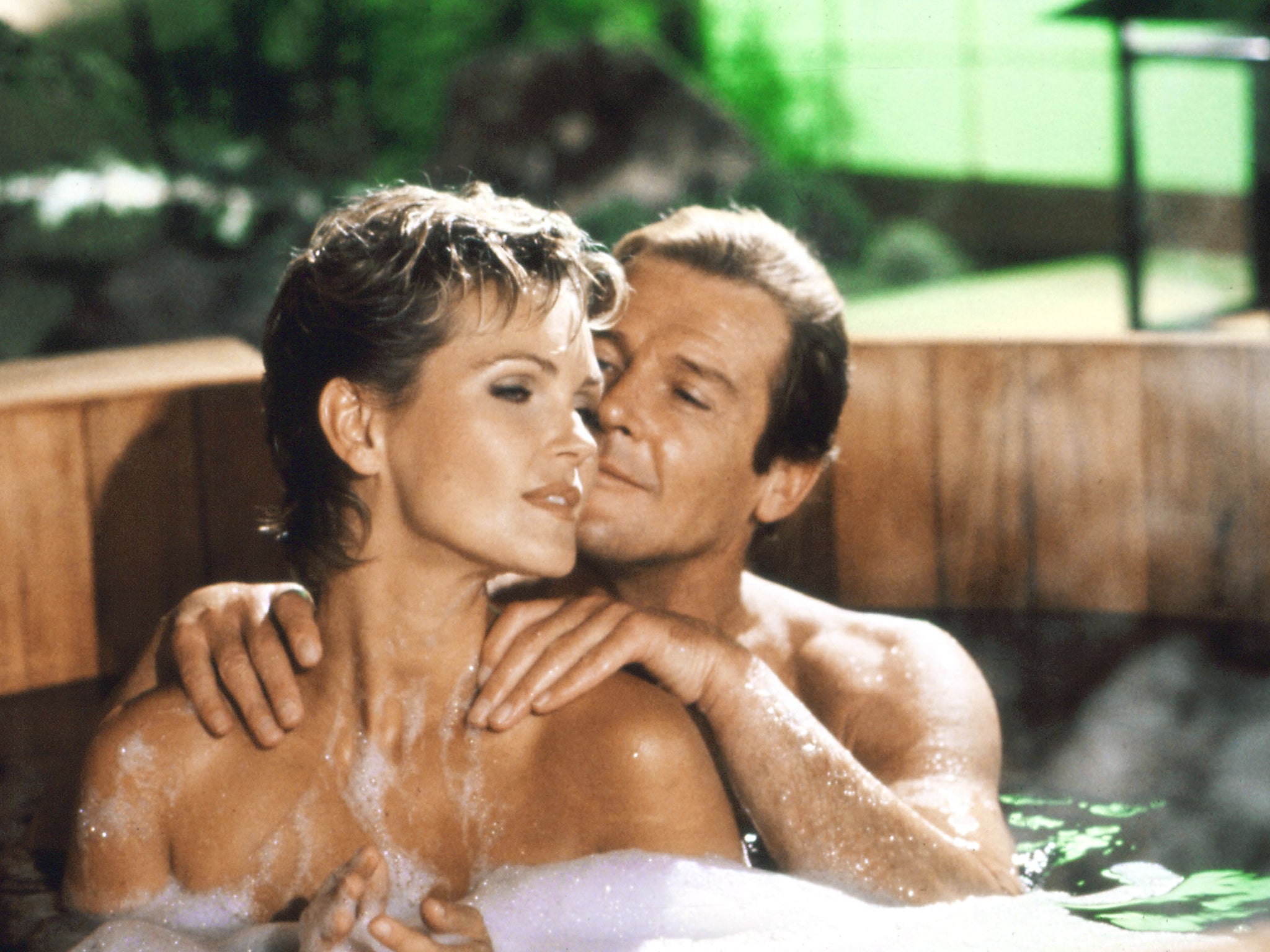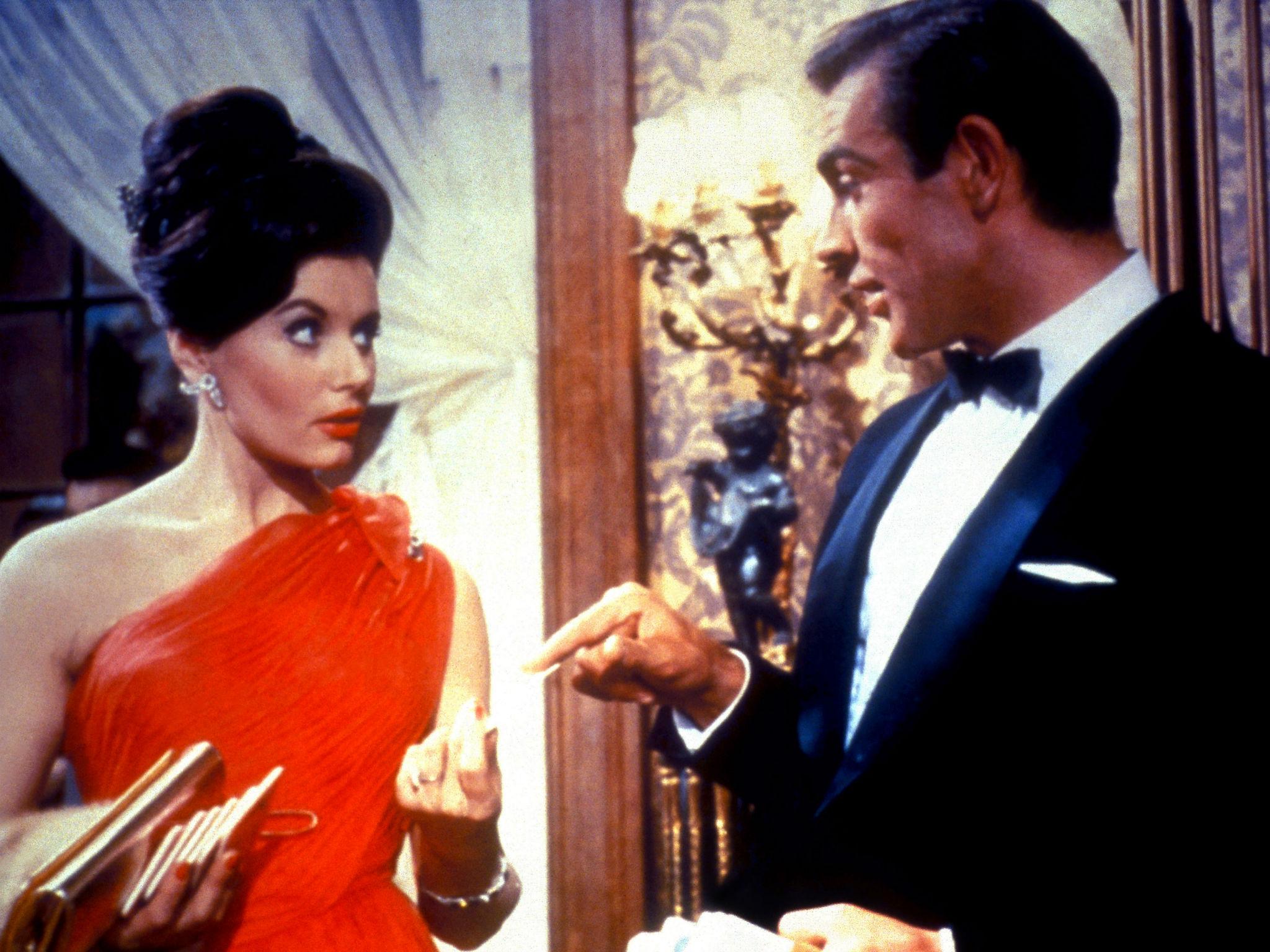Injuries, on-set chaos and coronavirus: How James Bond can survive it all
‘No Time to Die’ has been postponed until November, but it should be worth the wait, says Geoffrey Macnab

Bond is back – but not quite as soon as expected. Less than a month before its planned world premiere, the release of No Time to Die has been put back until November due to concerns about the coronavirus outbreak.
It’s a tribute to the still largely unsung Bond producers Barbara Broccoli and Michael G Wilson that Bond is so durable. They have shown ingenuity, tact, ruthlessness, restraint and (sometimes) recklessness in the way they have guided Ian Fleming’s spy hero into the 2020s.
Strangely, although the original producers, Albert “Cubby” Broccoli and Harry Saltzman, had big media profiles and used to vie with each other for public attention, Broccoli and Wilson have largely stayed out of the public eye. Their decision, announced in typically matter-of-fact fashion on Wednesday, to postpone the film’s release, is yet another example of the duo acting quickly and decisively to protect 007. The posters may be in the cinemas already and the Billie Eilish theme song may have climbed to the top of the UK singles chart, but the producers have realised this is no time to release No Time to Die.
Expectations remain high for what will be the 25th film in the series. The seven-month wait will only whet appetites further. This is the first post-Brexit Bond movie and the first in the #MeToo era. Cultural critics have been lobbing grenades at the Bond films ever since they first appeared. Some continue to assault Bond as a hopelessly anachronistic wish-fulfilment fantasy figure for boys who refuse to grow up. The latest challenge for Britain’s favourite secret agent is to deal with a deadly virus. Nonetheless, box-office analyst Comscore is still confident that he will take the outbreak in his stride and that the new 007 movie will be the top film of the year in the UK.
Bond seems far more tuned into the zeitgeist today than he did in the mid-1980s. That was when Roger Moore was coming to the end of his seven-film stint as Bond. Moore was 58 when he chased Grace Jones up the Eiffel Tower in A View to a Kill (1985), which is regarded by many as the nadir of the series. By then, the familiar pleasures of the typical Bond film had begun to seem vaguely grotesque. The luxury, violence, sex, schmaltz and all those Mack Sennett-style chases in speedboats and cars were lapsing into self-parody.
“The latest James Bond films have become strenuous to watch, now that the business of maintaining Bond’s casual savoir-faire looks like such a monumental chore,” critic Janet Maslin noted of the alarming way the franchise had begun to creak by the mid-1980s. “The effort involved in keeping Roger Moore’s 007 impervious to age, changing times or sheer deja vu seems overwhelming.”
Watching the ever willing and ever charming Moore flexing his eyebrows or wielding his Walther PPK in his later Bond films was like seeing an ageing British rocker still slathering in his skin-tight leathers at the microphone, refusing to acknowledge the passing of the years.

The years had indeed passed. The Bond movies are as old as the Beatles and the Rolling Stones. By a neat coincidence, Dr No premiered in the UK on 5 October 1962, on the very same day that the Beatles released their first single, “Love Me Do”.
It’s easy to be cynical about the crass way that Bond is now marketed. For the new film, the latest wheeze is 007 Dry Martini Gourmet Popcorn – No Time to Die edition, “popped not stirred”, and “coated in smooth caramel and infused with 5 per cent real gin and vodka with a twist of lemon”. Whether or not this popcorn will be sold to minors or will get you tipsy if you eat enough of it, the very concept sticks in the gullet.
Shaun of the Dead director Edgar Wright was rightly critical earlier this week of the product placement that now goes hand in hand with any new Bond film. “You know when you see No Time to Die, the new Bond film, you’re going to sit through one watch commercial, one beer commercial and one car commercial – and they’re all going to show you clips of the movie you are about to see,” Wright told a cinema exhibitors conference of the way the ads shown in cinema contain spoilers about the film they precede.
The new film had teething problems long before coronavirus. Then again, most Bond movies do. That’s part of their backstory and their myth
Nonetheless, Wilson (Cubby Broccoli’s stepson) and Broccoli (Cubby’s daughter) have never allowed the commercial exploitation of Bond to go too far. A few years ago, Wilson gave a revealing talk on “the art of nurturing franchises” at an industry event organised by the British Screen Advisory Council (BSAC). He suggested that “there was no magic key” that would keep the Bond films successful. Nor was it wise to slavishly repeat the formula that had worked in one Bond movie in the next one. That would lead to “complacency and disaster”.
Wilson and Barbara Broccoli had begun to feel very uncomfortable with the “fantastical” direction in which Bond had been going at the end of the Pierce Brosnan era when they had been making Die Another Day (2002), notorious for its invisible car, “the ultimate in British engineering”.
In the build-up to Casino Royale, the studio commissioned a research report looking at what audiences wanted from Bond.
“The results showed that poker was of no interest to the public; changing the actor was risky; to reduce risk it was preferable not to play around with key elements such as gadgets, Bond girls, one-liners, Q and Moneypenny; and that audiences were not interested in Bond having a serious relationship with a woman,” Wilson explained. He and Barbara Broccoli reacted by roundly rejecting the research. Whenever in doubt, their instinct had always been to return to 007 as originally described by Ian Fleming, “quiet, hard, ruthless, sardonic, fatalistic”. Cubby Broccoli had told them again and again that Bond was “the star”. By that, he meant that Bond was bigger than any actor, writer or director. The trick was to concentrate on the character and not to get distracted by the circus around him.
The pared-down, back-to-basics approach on Casino Royale, epitomised by the casting of Daniel Craig as Bond instead of the debonair Brosnan, was considered a huge risk but galvanised the franchise. Now, perhaps, the Bond series needs to swivel again.

No Time to Die is surely the end of the current cycle. Craig is playing Bond for the fifth and final time. If he continued in the role, he would be almost as old as Moore in A View to a Kill.
As has been exhaustively chronicled, the new film had teething problems long before coronavirus. Then again, most Bond movies do. That’s part of their backstory and their myth. When it comes to Bond, there is always bitterness and upheaval behind the scenes. Bond family members are close-knit but have a habit of turning against one another. A newspaper famously quoted Sean Connery as saying that if Cubby Broccoli’s brain was on fire, he “wouldn’t piss in his ear to put it out”. Connery was disgruntled because he hadn’t been paid enough.
Often with Bond films, what looks initially like bungling and bad luck turns out to be to their ultimate advantage
Potentially even more damaging to the series was the long-running feud between the producers and Kevin McClory. “A young, rakish Irishman ... ambitious and shrewd behind the smile permanently riveted to his Nassau tan,” as Cubby Broccoli’s biographer Donald Zec called him.
McClory was in dispute with Cubby Broccoli and Saltzman for decades. After winning a court case against Fleming, he had secured the film rights to Thunderball, which he remade as Never Say Never Again. Until his death in 2006, he continued to threaten to spin yet more adaptations of that one story and to create an alternative Bond universe in the process. The Bond producers were dismayed and appalled by him but perhaps he energised them as well. With him in the background, they couldn’t relax.
Cubby Broccoli and Saltzman fell out with each other too, again over money, but the series survived even as their relationship frayed.

No Time to Die got off to a false start after Danny Boyle, the original director, quit following disagreements he and his screenwriter John Hodge (of Shallow Grave and Trainspotting fame) had with the producers over the way the story was evolving.
Often with Bond films, what looks initially like bungling and bad luck turns out to be to their ultimate advantage. The departure of Boyle and Hodge left the writing in the hands of the old regulars Neal Purvis and Robert Wade, who’ve been working on the series for more than 20 years since The World is Not Enough in 1999. The new director, Cary Fukunaga, chipped in and Phoebe Waller-Bridge (of Fleabag fame) was brought on board to add “some little spices” to the treatment. Without the delay, Rami Malek might never have been cast as the villain because his Oscar for Bohemian Rhapsody, which made him an international star, might have come too late for him to be considered.
When production was finally under way, Craig sustained an injury which threatened to interrupt the schedule further.
“I was running down a floating dock, and it was wet, and I slipped, and I fell over, and my ankle exploded,” Craig blithely told Entertainment Weekly of the kind of mishap you expect to befall middle-aged weekend warriors during overly strenuous sporting workouts, but not battle-hardened actor-athletes.
Craig’s injury was global news. It ensured that everybody was aware that the new film was on its way, even if it was hobbling towards its release date, which had already been postponed twice.
Now, No Time to Die has been delayed yet again, caught up in the coronavirus chaos. That, though, won’t stop the film from finding its audience. It will just delay the process. Some are suggesting that the editors of the new movie will secretly be very relieved they have been given extra time to finish what otherwise might have been a very rushed job. Whatever happens between now and November, Wilson and Barbara Broccoli will make sure the franchise survives. Once they have guided a fit and healthy Bond 25 into cinemas, they will then start plotting the best way to reinvigorate (and re-cast) the series in time for Bond 26.
‘No Time to Die’ is due for UK release on 12 November
Join our commenting forum
Join thought-provoking conversations, follow other Independent readers and see their replies
Comments